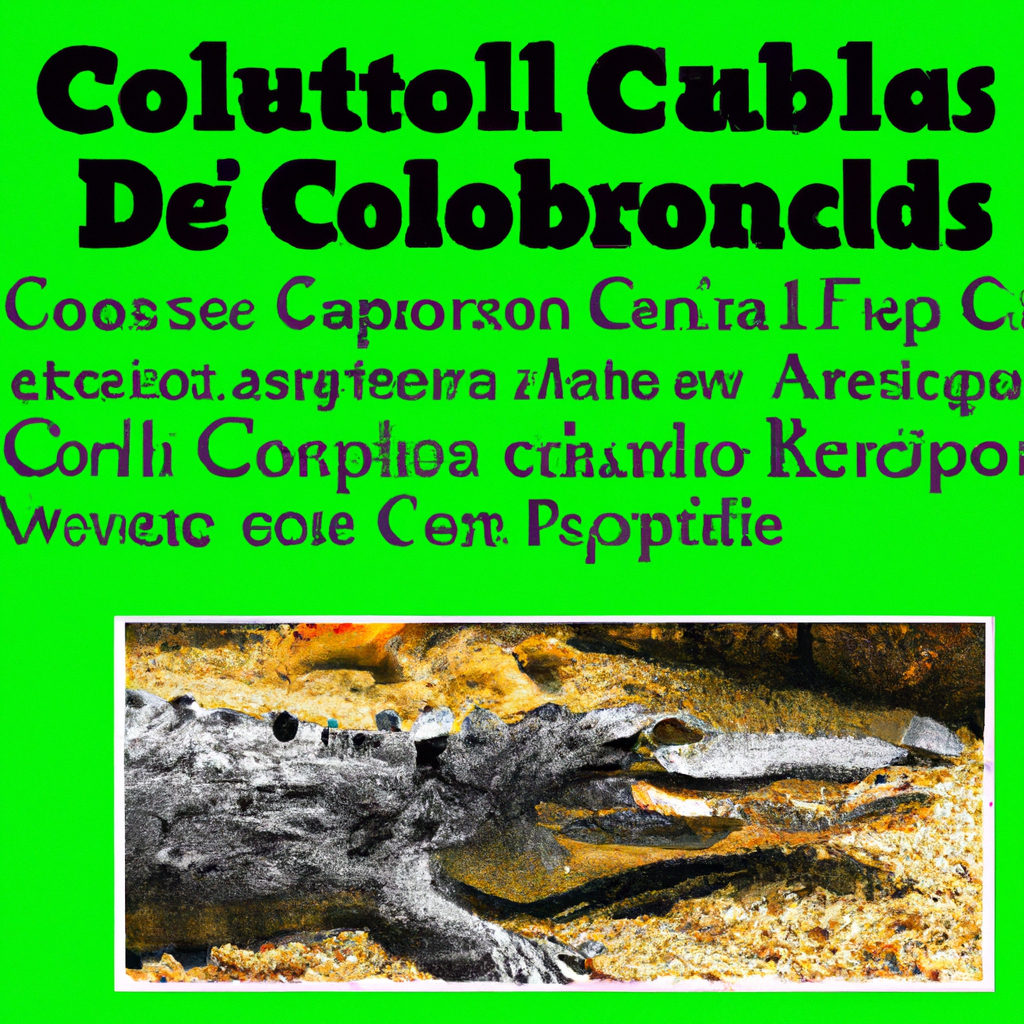Imagine yourself exploring the beautiful Caribbean, with its crystal-clear waters and palm-fringed beaches. But amidst this paradise lies an unexpected thrill – the presence of crocodiles. Yes, you read that right! In this article, we’ll take you on an exciting journey as we uncover the fascinating world of “Cocodrilos en el Caribe,” shedding light on these magnificent creatures and the unique environment they call home. So grab your sunscreen and join us as we embark on an unforgettable adventure in the land of crocodiles.
Habitat of Crocodiles in the Caribbean
Coastal areas
Coastal areas serve as important habitats for crocodiles in the Caribbean. These reptiles can be found along the shorelines of various islands, as they are well-adapted to both marine and freshwater environments. The warm, tropical climate and abundance of food sources make the Caribbean’s coastal areas ideal for crocodiles to thrive.
Mangrove forests
Mangrove forests are another crucial habitat for crocodiles in the Caribbean. These unique ecosystems provide both shelter and an abundant food supply for crocodiles. The dense network of roots and branches in mangroves creates a complex habitat that allows crocodiles to navigate and hunt effectively. These forests are not only essential for the survival of crocodiles but also for numerous other species that depend on them.
Inland waterways
Inland waterways, such as rivers, lagoons, and swamps, are also important habitats for crocodiles in the Caribbean. These freshwater ecosystems provide an array of prey, including fish, crustaceans, and small mammals, which are vital for the crocodile’s survival. Crocodiles have a unique ability to regulate their body temperature, making these warm tropical waters ideal for their thermoregulation needs.
Diversity of Crocodile Species in the Caribbean
American Crocodile
The American crocodile (Crocodylus acutus) is one of the most iconic and widely distributed crocodile species in the Caribbean. It can be found in various countries, including Mexico, Belize, Cuba, Jamaica, and the Dominican Republic. Known for its broad snout and lighter-colored skin, the American crocodile is classified as a vulnerable species and is protected by various conservation measures throughout the region.
Cuban Crocodile
Endemic to Cuba, the Cuban crocodile (Crocodylus rhombifer) is a critically endangered species. These crocodiles have a more slender snout and distinctive bony plates on their backs, known as osteoderms. Due to habitat destruction and illegal hunting, the Cuban crocodile population has significantly declined, and conservation efforts are crucial for their survival.
Morelet’s Crocodile
Morelet’s crocodile (Crocodylus moreletii), also known as the Mexican crocodile, is primarily found in Mexico, Belize, and Guatemala. This species is recognized for its broad distribution and semi-aquatic lifestyle. Morelet’s crocodiles play a significant role in the ecosystems they inhabit, supporting overall biodiversity and maintaining the health of their habitats.

Threats to Crocodiles in the Caribbean
Habitat loss
Habitat loss is one of the primary threats faced by crocodiles in the Caribbean. The development of coastal areas, including tourism infrastructure and urbanization, leads to the destruction of vital crocodile habitats. Mangrove deforestation, in particular, poses a significant threat to the survival of crocodile populations, as it disrupts their breeding, nesting, and foraging grounds.
Illegal hunting
Illegal hunting, driven by the demand for crocodile products, remains a major concern in the Caribbean. Crocodile skins, meat, and body parts are sought after for various reasons, including the illegal wildlife trade and traditional uses. Poaching not only decimates crocodile populations but also disrupts the balance of ecosystems in which they play a crucial role.
Pollution and climate change
Pollution and climate change are significant threats to crocodiles and their habitats in the Caribbean. Pollution, such as chemical runoff and plastics, contaminates waterways and affects crocodile health and reproductive success. Additionally, rising sea levels and increased storm frequency due to climate change can result in habitat degradation and loss, further endangering these ancient reptiles.
Conservation Efforts for Crocodiles in the Caribbean
Protected areas and reserves
One of the key strategies for conserving crocodiles in the Caribbean is the establishment of protected areas and reserves. These areas provide essential protection to crocodile habitats, restrict human activities that may harm the species, and promote conservation-focused management. By designating these protected areas, governments and conservation organizations contribute to the preservation of crocodile populations and the ecosystems they inhabit.
Community-based conservation
Engaging local communities in crocodile conservation efforts is vital for long-term success. Community-based conservation initiatives involve educating residents about the importance of crocodiles and their habitats, promoting responsible tourism practices, and encouraging sustainable livelihood options that do not harm crocodile populations. By involving communities, conservation efforts can be more effective and better integrated into the social fabric of the region.
Research and monitoring programs
Scientific research and monitoring programs play a crucial role in understanding the behavior, ecology, and population dynamics of crocodiles in the Caribbean. These programs help gather valuable data on crocodile populations, monitor habitat changes, and assess the effectiveness of conservation measures. By continuously studying these reptiles, conservationists can make informed decisions and adapt strategies to protect and conserve crocodiles effectively.

Role of Crocodiles in Caribbean Ecosystems
Top predators
As top predators, crocodiles play a critical role in maintaining the balance and biodiversity of Caribbean ecosystems. They help control populations of prey species, keeping them in check and preventing ecological imbalances. By regulating prey populations, crocodiles contribute to the overall health of the ecosystem and enhance its resilience.
Ecosystem engineers
Crocodiles are also considered “ecosystem engineers” due to their ability to shape their surroundings. Through their nesting and burrowing activities, crocodiles create habitat niches that benefit other species. These burrows can act as shelter for various organisms during extreme weather events, contributing to overall ecosystem stability.
Indicator species
Crocodiles are regarded as indicator species, meaning their presence or absence can indicate the health of an ecosystem. Monitoring crocodile populations and their overall condition provides valuable insights into the quality of the waterways, the abundance of prey species, and the overall ecological well-being of the region. By protecting crocodiles, we indirectly protect the integrity of the entire Caribbean ecosystem.
Crocodile Attacks in the Caribbean
Recorded incidents
While crocodile attacks in the Caribbean are relatively rare, they can occur, especially when humans enter crocodile habitats or disturb nesting sites. Recorded incidents highlight the importance of understanding and respecting the natural behavior of these reptiles. It is crucial for locals and tourists alike to be aware of these risks and take appropriate precautions to minimize the chances of a crocodile encounter.
Preventive measures
Preventing crocodile attacks requires a combination of public education, responsible tourism practices, and proactive management. Signs and warnings in areas where crocodiles are known to inhabit can help raise awareness among visitors. Additionally, respecting crocodile habitats, avoiding swimming in unknown waters, and refraining from approaching or feeding crocodiles are essential preventive measures to minimize human-crocodile conflicts.

Crocodile Farming and Tourism in the Caribbean
Sustainable practices
Crocodile farming and tourism can provide economic opportunities while promoting conservation and sustainable practices. When managed responsibly, crocodile farms can help reduce pressure on wild populations by meeting the demand for crocodile products legally and ethically. Sustainable tourism practices, such as guided crocodile-watching tours, can generate income for local communities without negatively impacting crocodile habitats.
Economic benefits
Crocodile farming and tourism can contribute significantly to the local economy in the Caribbean. Job creation, revenue from farm operations, and income generated by tourist activities all have positive economic impacts. By integrating crocodile-related industries into the local economy, communities can benefit while also supporting conservation efforts.
Ethical considerations
It is essential to address ethical considerations associated with crocodile farming and tourism. Strict regulations and oversight are necessary to ensure the welfare of farmed crocodiles and prevent the illegal trade of wild crocodiles. Additionally, eco-tourism practices should prioritize responsible behavior and minimize disturbance to crocodiles and their habitats, putting their well-being first.
Cultural Significance of Crocodiles in the Caribbean
Mythology and folklore
Crocodiles hold significant cultural importance in the Caribbean, often featuring prominently in local mythology and folklore. They are associated with creation stories, spiritual beliefs, and legends passed down through generations. The cultural symbolism of crocodiles adds to their value and serves as a reminder of the deep historical and cultural connections between humans and nature.
Art and symbolism
Crocodiles have inspired various forms of artistic expression in the Caribbean. They are depicted in paintings, sculptures, and traditional crafts, reflecting their cultural and aesthetic significance. The artistry surrounding crocodiles celebrates their beauty and unique characteristics, further reinforcing their place in local cultures.
Traditional uses
Crocodiles have historically been utilized by Caribbean communities for their various resources. Traditional uses include the use of crocodile meat for food, crafting tools and decorative items from crocodile bones and teeth, and using crocodile skins for clothing and shelter. While these practices are less prevalent today, they highlight the historical and cultural ties between humans and crocodiles in the region.

Crocodile Conservation and Sustainable Development
Balancing conservation and development
Balancing the conservation of crocodiles with the need for sustainable development is a complex task. It requires collaboration among stakeholders, including governments, local communities, conservation organizations, and the private sector. By integrating conservation goals into development plans and ensuring the participation of all stakeholders, it is possible to achieve a harmonious balance between conserving these iconic creatures and promoting sustainable development.
Education and awareness
Education and awareness programs are fundamental in cultivating a culture of conservation in the Caribbean. By educating both residents and tourists about the importance of crocodiles and the threats they face, we can foster a sense of responsibility and understanding. Empowering individuals with knowledge about crocodiles and their ecological significance promotes informed decision-making and encourages the adoption of conservation-oriented practices.
Collaboration and partnerships
The conservation of crocodiles in the Caribbean requires collaborative efforts and partnerships between various organizations and stakeholders. Governments, non-profit organizations, research institutions, local communities, and the private sector must work together to develop and implement effective conservation strategies. By pooling resources, sharing expertise, and fostering cooperation, these partnerships can maximize conservation impact and ensure the long-term survival of crocodiles in the Caribbean.
Future Outlook for Crocodiles in the Caribbean
Challenges and opportunities
Despite the challenges faced by crocodiles in the Caribbean, there are also opportunities for their conservation and recovery. Continued habitat protection, stricter regulations against illegal hunting and trade, and efforts to mitigate pollution and climate change can all contribute to a more favorable future for crocodile populations. Innovative approaches, such as community-based conservation initiatives and sustainable tourism practices, provide promising avenues for the coexistence of crocodiles and human communities.
Promoting coexistence
Promoting coexistence between humans and crocodiles is crucial for the long-term conservation of these magnificent creatures. This involves implementing strategies to minimize human-crocodile conflicts, including careful urban planning, creating wildlife corridors, and developing early warning systems. By respecting crocodile habitats and adopting responsible behavior, we can ensure a future where both humans and crocodiles can thrive.
Adaptive management
Adaptive management is essential to respond effectively to changing circumstances and ensure the continued success of crocodile conservation efforts in the Caribbean. This approach involves continuously monitoring populations, habitat conditions, and threats, and adjusting strategies accordingly. By embracing adaptive management principles, conservationists can stay responsive, flexible, and proactive in protecting these ancient reptiles and the ecosystems they inhabit.
In conclusion, crocodiles in the Caribbean play a vital role in maintaining the health and balance of the region’s ecosystems. From their habitats in coastal areas and mangrove forests to their status as top predators and ecosystem engineers, their significance cannot be understated. However, these ancient reptiles face numerous threats, including habitat loss, illegal hunting, and pollution. Efforts to conserve crocodiles in the Caribbean involve protected areas, community-based initiatives, research programs, and awareness campaigns. By promoting sustainable development and fostering collaboration, we can ensure a bright future for both crocodiles and the diverse ecosystems they call home.

